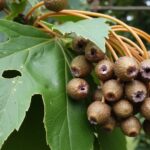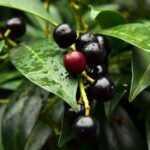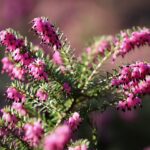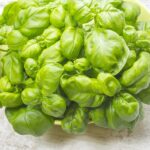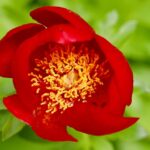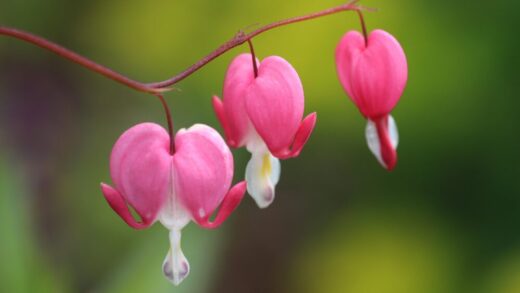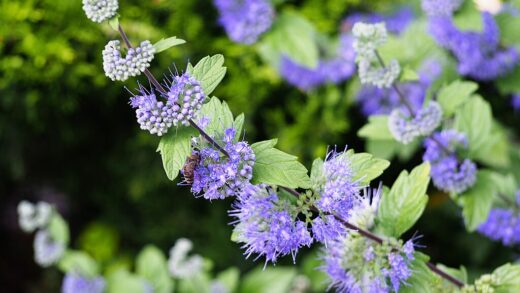The blue eryngo, a striking perennial celebrated for its unique architectural form and intense metallic blue hue, offers a distinctive appeal to any garden landscape. Its care is remarkably straightforward, making it an excellent choice for both novice and experienced gardeners seeking a low-maintenance yet high-impact plant. Understanding its fundamental needs, which are deeply rooted in its native grassland and gravelly soil habitats, is the key to cultivating a thriving specimen. This involves providing conditions that mimic its natural environment, focusing on excellent drainage, ample sunlight, and minimal interference once established.
Proper care begins with selecting the right location, as this single decision will dictate the plant’s long-term health and vigor more than any other factor. The blue eryngo possesses a deep taproot, which makes it incredibly drought-tolerant but also means it resents being moved once it has settled in. Therefore, thoughtful initial placement is critical for success, ensuring it has the space and conditions to mature fully. Its thistle-like appearance, while beautiful, also comes with spiny bracts, so consider its position relative to pathways and seating areas. Ultimately, a hands-off approach often yields the best results with this resilient and self-sufficient perennial.
The rewards of cultivating the blue eryngo extend beyond its visual appeal in the garden bed. The flower heads are highly valued for both fresh and dried floral arrangements, retaining their color and form for an extended period. To maximize the quality of these blooms, attentive care during the growing season is beneficial, focusing on practices that enhance the intensity of their blue coloration. This includes ensuring maximum sun exposure and avoiding overly rich soils or excessive fertilization, which can lead to weaker stems and less vibrant flowers. Proper care ensures not just a healthy plant, but also a bountiful harvest for indoor enjoyment.
Embracing the natural tendencies of the blue eryngo is the cornerstone of its successful cultivation. This is not a plant that demands constant coddling, feeding, or watering; in fact, too much attention can be detrimental to its health. It thrives on a degree of neglect that other garden plants would not tolerate, making it a sustainable choice for water-wise gardens and xeriscaping projects. By providing the basic requirements of sun and drainage, you allow the plant’s robust genetics to flourish, resulting in a dramatic and enduring garden feature that provides interest from summer through winter.
Site selection and soil preparation
Choosing the perfect location is the most critical step in ensuring the long-term health of the blue eryngo. This plant absolutely requires full sun exposure to thrive, develop its characteristic steel-blue color, and maintain a sturdy, upright habit. A site that receives at least six to eight hours of direct sunlight per day is ideal; anything less can result in leggy growth, weaker stems that may flop over, and a significant reduction in the vibrancy of the blooms. Consider a spot in a south-facing border, a rock garden, or a gravel garden where it will not be overshadowed by taller plants or structures.
The blue eryngo is famously intolerant of wet, poorly drained soils, a trait stemming from its origin in dry, sandy, or gravelly habitats. Excellent drainage is non-negotiable, as the plant’s deep taproot is highly susceptible to rot in waterlogged conditions, especially during the winter months. To prepare the planting site, it is essential to amend heavy clay or compacted soils with materials that improve porosity, such as coarse sand, fine gravel, or organic compost. The goal is to create a lean, free-draining medium that prevents water from stagnating around the root system, ensuring the plant’s survival and prosperity.
Soil fertility is another key consideration, and in the case of blue eryngo, less is often more. This perennial performs best in poor to average soil and does not require a nutrient-rich environment to flourish. Overly fertile or heavily amended soils can stimulate lush, soft foliage at the expense of flower production and can also lead to weaker, less stable stems that are prone to flopping. Therefore, avoid adding rich manures or high-nitrogen fertilizers to the planting area. A simple, unimproved soil is often the best choice for encouraging a robust and floriferous plant.
When preparing the bed, it is also important to consider the plant’s mature size and its dislike of being transplanted. The blue eryngo develops a substantial taproot that delves deep into the soil, making it very difficult to move successfully once established. Ensure you select a permanent home for it, allowing ample space for it to reach its full height and spread without crowding its neighbors. This foresight during the preparation phase will prevent future disturbances and allow the plant to establish the strong root system it needs for its characteristic drought tolerance and longevity.
Watering and moisture management
Proper watering for the blue eryngo is a lesson in restraint, as its needs are dictated by its exceptional drought tolerance. Once the plant is established, it requires very little supplemental irrigation and is far more likely to suffer from overwatering than from a lack of moisture. The deep taproot is incredibly efficient at seeking out water from lower soil profiles, allowing it to withstand extended periods of dryness with ease. For mature plants, rainfall in most temperate climates is usually sufficient to meet their needs throughout the growing season. Only in cases of severe, prolonged drought should you consider providing a deep, infrequent watering.
During the initial establishment phase, however, the blue eryngos watering needs are slightly different. After planting, it is important to water the young plant regularly to encourage the development of its deep and extensive root system. For the first growing season, provide consistent moisture, allowing the soil to dry out moderately between waterings. This helps the plant settle in without causing the roots to become waterlogged. Once you observe strong, new growth, you can gradually reduce the frequency of watering, transitioning the plant to a more self-sufficient regimen.
The key to successful moisture management is to always assess the soil conditions before reaching for the hose. A simple test is to insert your finger a few inches into the soil near the base of the plant; if it feels dry at that depth, then a thorough soaking may be beneficial, particularly for younger plants. Avoid shallow, frequent watering, as this encourages the development of a weak, shallow root system that makes the plant less resilient to drought. A deep, occasional watering is always the superior approach, as it promotes the downward growth of the taproot.
Recognizing the signs of improper watering is crucial for maintaining the health of your blue eryngo. An overwatered plant may exhibit yellowing leaves, rotting at the base of the stem, or a general lack of vigor, as the saturated soil deprives the roots of oxygen. Conversely, an underwatered plant, a much rarer occurrence, might show signs of wilting or crispy, brown foliage, though it is remarkably resilient. By understanding its natural preference for dry conditions and adjusting your practices accordingly, you can ensure your plant remains healthy and structurally sound.
Feeding and nutrition
The nutrient requirements of the blue eryngo are minimal, reflecting its adaptation to lean, often poor-quality soils in its native environment. This is a plant that truly thrives on neglect when it comes to feeding, and excessive fertilization can be counterproductive. Rich soils and high levels of nutrients, particularly nitrogen, tend to promote an abundance of soft, floppy foliar growth and can diminish the intensity of the flower’s signature blue color. Therefore, in most average garden soils, no supplemental fertilizer is necessary for the plant to perform beautifully.
If you are planting blue eryngo in extremely poor or sandy soil that is deficient in all nutrients, a single application of a balanced, slow-release granular fertilizer in the spring can be beneficial. Choose a formulation that is low in nitrogen and higher in phosphorus and potassium, which support root development and flowering rather than excessive leaf growth. A small amount worked into the soil around the base of the plant as new growth emerges is all that is required for the entire season. This modest boost can help the plant establish more robustly without compromising its structural integrity.
Organic amendments can be a suitable alternative to synthetic fertilizers, but they must be used with caution. A light top-dressing of well-rotted compost or leaf mold in the spring can help improve soil structure and provide a slow, gentle release of nutrients. However, it is critical to avoid heavy applications of rich materials like fresh manure, which can lead to the same problems as high-nitrogen chemical fertilizers. The goal is to slightly enrich the soil, not to create a fertile bed that would be more suited to nutrient-hungry perennials.
Ultimately, observing your plant’s performance is the best way to gauge its nutritional needs. A healthy blue eryngo will exhibit sturdy stems, healthy green basal leaves, and vibrant, intensely colored flower heads. If the plant appears weak, has pale foliage, or is failing to thrive despite being in a sunny, well-drained location, a soil test might be warranted to identify any specific deficiencies. In the vast majority of cases, however, the best approach to feeding your blue eryngo is to refrain from doing so, allowing its natural resilience to shine.
General maintenance and deadheading
General maintenance for the blue eryngo is delightfully minimal, making it a favorite among gardeners who appreciate low-effort, high-reward plants. Beyond ensuring it is planted in the right location, there is very little required during the growing season to keep it looking its best. The plant is naturally tidy and does not spread aggressively, maintaining a well-behaved clump that gradually expands over time. Its sturdy stems typically do not require staking, especially when grown in the lean soil and full sun it prefers, as these conditions promote strong, compact growth.
Deadheading, or the removal of spent flowers, is a common practice for many perennials to encourage reblooming, but it is a matter of personal preference with the blue eryngo. Removing the faded flower heads can sometimes stimulate a minor secondary flush of smaller blooms later in the season. To do this, simply cut the flower stalk back to a point where it meets a lower set of leaves. This practice can help maintain a tidier appearance in a more formal garden setting during the late summer months.
However, many gardeners choose to leave the spent flower heads on the plant throughout the autumn and winter, and for good reason. The architectural, spiny flower structures provide outstanding visual interest long after their color has faded, looking particularly dramatic when dusted with frost or snow. They also provide a valuable food source for seed-eating birds, such as goldfinches, adding another layer of ecological benefit to your garden. If you choose to leave them, the entire plant can be cut back to the basal foliage in late winter or early spring before new growth emerges.
Weed control around the base of the plant is another simple but important maintenance task, especially when the plant is young and becoming established. A layer of gravel or stone mulch can be highly effective at suppressing weeds while also improving surface drainage and complementing the plant’s aesthetic. This mulch also helps to keep the basal foliage dry, reducing the risk of fungal issues. By handling these few basic tasks, you can ensure your blue eryngo remains a stunning and trouble-free feature in your garden for many years.
Pests and disease management
One of the most appealing attributes of the blue eryngo is its remarkable resistance to most common garden pests and diseases. The plant’s tough, spiny leaves and stems are a natural deterrent to many grazing animals, including deer and rabbits, which tend to leave it alone in favor of more palatable options. This inherent resilience means that you will likely spend very little time managing pest-related issues, allowing you to enjoy its unique beauty without the need for chemical interventions or constant vigilance.
The most significant threat to the health of the blue eryngo is not a pest but a cultural issue: root rot. This condition is caused by fungal pathogens that thrive in wet, anaerobic soil conditions and can be fatal to the plant. The primary cause is poor drainage, which is why site selection is so critical. Symptoms of root rot include yellowing or browning of the basal foliage, a wilting appearance even when the soil is moist, and a soft, decaying crown at the soil line. Prevention through proper soil preparation is the only effective cure, as the condition is nearly impossible to reverse once it takes hold.
Occasionally, certain pests may appear, although they rarely cause significant damage. Aphids can sometimes colonize the new, tender growth, but they can typically be managed by a strong jet of water from a hose or by encouraging natural predators like ladybugs and lacewings. Slugs and snails might also nibble on the young basal leaves in damp weather, but this damage is usually superficial. The robust nature of the established plant means it can easily withstand minor pest infestations without a decline in its overall health.
Fungal leaf spots can sometimes develop on the foliage, particularly in humid climates or in gardens with poor air circulation. These typically appear as small, discolored spots on the leaves but are largely a cosmetic issue and do not harm the plant’s long-term vitality. To prevent this, ensure there is adequate spacing between plants to promote good airflow and avoid overhead watering, which can leave the foliage wet for extended periods. If necessary, affected leaves can be removed and disposed of to prevent the potential spread of spores.

